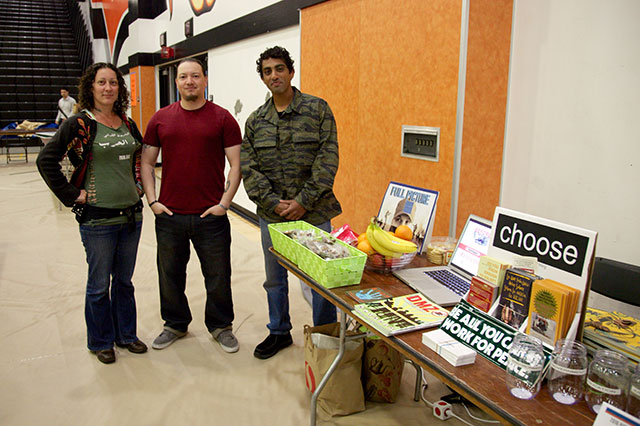Emily Yates | Originally published in Truthout - July 16, 2016
 "Back when we started, recruiters were just blatantly lying to the kids," said Susan Quinlan, the co-founder and volunteer coordinator of the peace and justice group, Better Alternatives for Youth–Peace (BAY-Peace). For 12 years, she's been bringing teams of youth into Oakland, California, schools to inform students about deceptive military recruiting practices. In that time, she has seen the recruitment climate in schools change drastically -- and not necessarily for the better.
"Back when we started, recruiters were just blatantly lying to the kids," said Susan Quinlan, the co-founder and volunteer coordinator of the peace and justice group, Better Alternatives for Youth–Peace (BAY-Peace). For 12 years, she's been bringing teams of youth into Oakland, California, schools to inform students about deceptive military recruiting practices. In that time, she has seen the recruitment climate in schools change drastically -- and not necessarily for the better.
"It used to be that recruiters would make promises to the kids that were patently untrue, like offering benefits that wouldn't materialize, for example, so our job was to go in and say, 'No, that's not true,'" Quinlan said. Then over the years, as the wars grew increasingly unpopular and recruitment dropped, the military beefed up the benefits and incentives to more closely match its promises. Many student activists saw that as a victory, she said, and as a result, the work lost urgency.
"The recruiters are still being dishonest," she said, "but it's become less obvious. And they haven't gone away. Now, recruitment is back up where it was before we started, and we're losing our funding."


 Recent legislative efforts to extend draft registration to young women have raised an old conundrum for some feminists. Does pursuit of gender equality include support for universal conscription?
Recent legislative efforts to extend draft registration to young women have raised an old conundrum for some feminists. Does pursuit of gender equality include support for universal conscription?







